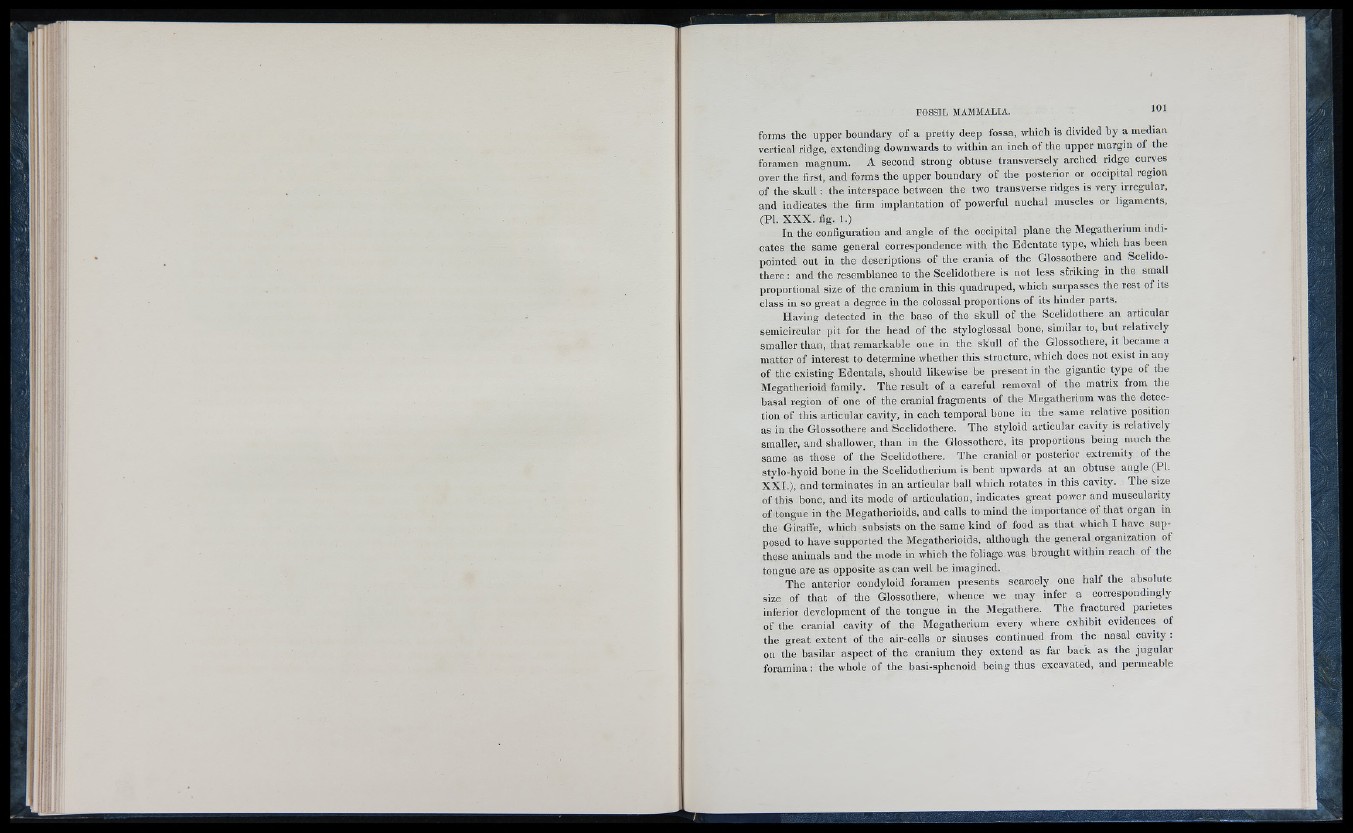
forms the upper boundary of a pretty deep fossa, which is divided by a median
vertical ridge, extending downwards to within an inch o f the upper margin o f the
foramen magnum, A second strong obtuse transversely arched ridge curves
over the first, and forms the upper boundary o f the posterior or occipital region
o f the s k u l l: the interspace between the two transverse ridges is very irregular,
and indicates the firm implantation o f powerful nuchal muscles or ligaments,
(PI. X X X . fig. I.)
In the configuration and angle o f the occipital plane the Megatherium indicates
the same general correspondence with the Edentate type, which has been
pointed out in the descriptions o f the crania o f the Glossothere and Scelidothere
: and the resemblance to the Scelidothere is not le ss striking in the small
proportional size o f the cranium in this quadruped, which surpasses the rest o f its
class in so great a degree in the colossal proportions o f its hinder parts.
Having detected in the base o f the skull of the Scelidothere an articular
semicircular pit for the head o f the sty loglossal bone, similar to, but relatively
smaller than, that remarkable one in the skull o f the Glossothere, it became a
matter o f interest to determine whether this structure, which does not ex ist in any
o f the ex isting Edentals, should likewise be present in the gigantic type o f the
Megatherioid family. The result o f a careful removal o f the matrix from the
basal region o f one o f the cranial fragments o f the Megatherium was the detection
o f this articular cavity, in each temporal hone in the same relative position
as ill the Glossothere and Scelidothere. The styloid articular cavity is relatively
smaller, and shallower, than in the Glossothere, its proportions being much the
same as those o f the Scelidothere. The cranial or posterior extremity o f the
stylo-hyoid bone in the Scelidotherium is bent upwards at an obtuse angle (PI.
X X I .), and terminates in an articular ball which rotates in this cavity. The size
o f this bone, and its mode o f articulation, indicates great power and muscularity
o f tongue in the Megatherioids, and calls to mind the importance o f that organ in
the Giraffe, which subsists on the same kind o f food as that which I have supposed
to have supported the Megatherioids, although the general organization of
these animals and the mode in which the foliage was brought within reach o f the
tongue are as opposite as can well be imagined.
The anterior condyloid foramen presents scarcely one ha lf the absolute
size o f that o f the Glossothere, whence we may infer a correspondingly
inferior development o f the tongue in the Megathere. The fractured parietes
o f the cranial cavity o f the Megatherium every where exhibit evidences of
the great ex tent o f the air-cells or sinuses continued from the nasal cavity :
on the basilar aspect o f the cranium they extend as far back as tlie jugular
foramina: the whole o f the basi-sphenoid being thus excavated, and permeable